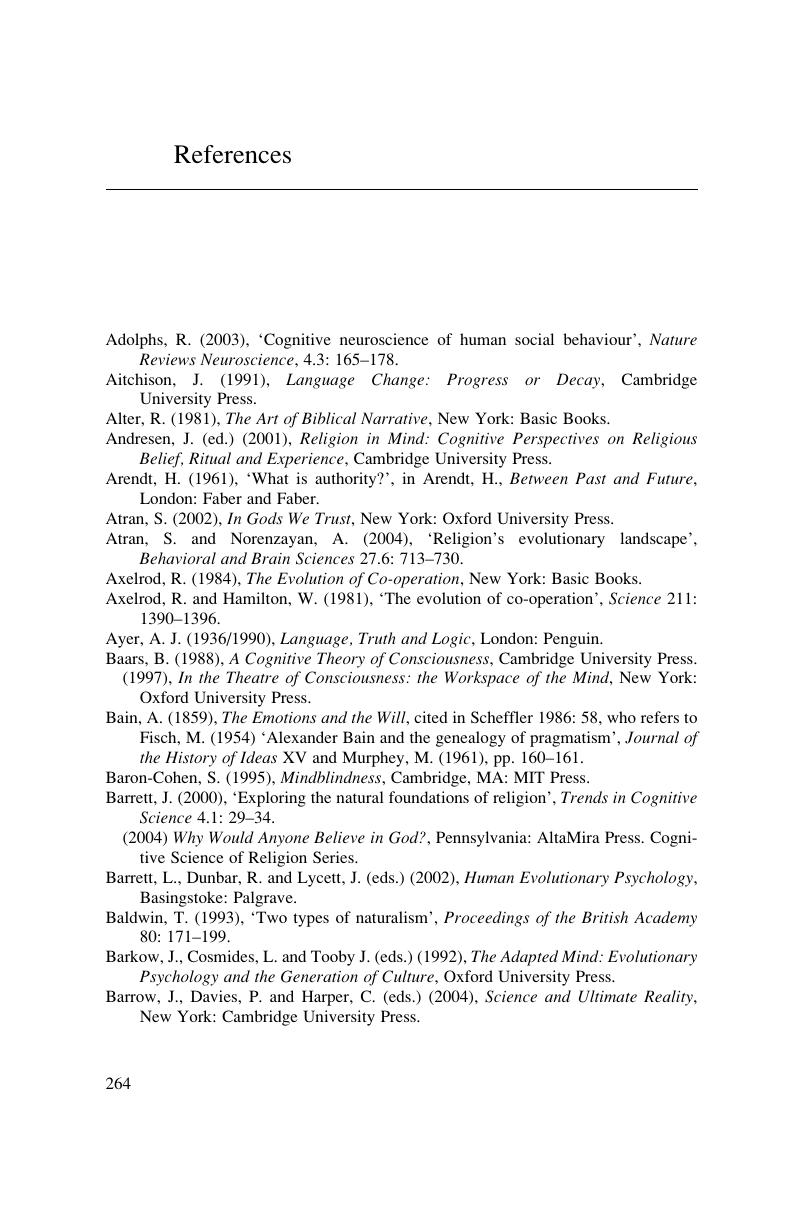Book contents
- Frontmatter
- Contents
- List of figures
- Acknowledgements
- Introduction
- 1 A cognitive theory of religion
- 2 The supernatural and the uses of the intentional
- 3 Dissemination and the comprehension of mysteries
- 4 Pragmatics and pragmatism
- 5 Authority
- 6 Conceptual innovation and revelatory language
- References
- Index
- References
References
Published online by Cambridge University Press: 10 January 2011
- Frontmatter
- Contents
- List of figures
- Acknowledgements
- Introduction
- 1 A cognitive theory of religion
- 2 The supernatural and the uses of the intentional
- 3 Dissemination and the comprehension of mysteries
- 4 Pragmatics and pragmatism
- 5 Authority
- 6 Conceptual innovation and revelatory language
- References
- Index
- References
Summary

- Type
- Chapter
- Information
- Language and ReligionA Journey into the Human Mind, pp. 264 - 274Publisher: Cambridge University PressPrint publication year: 2010

